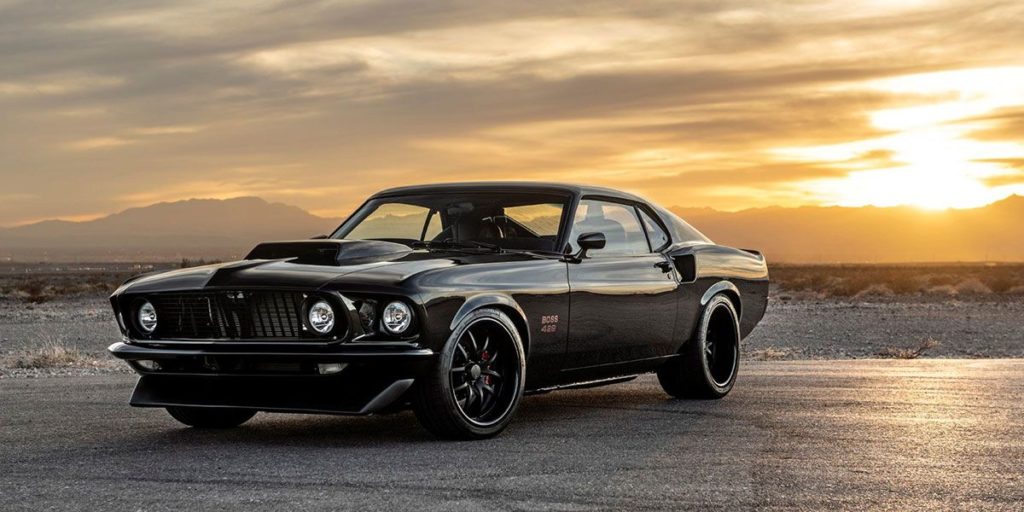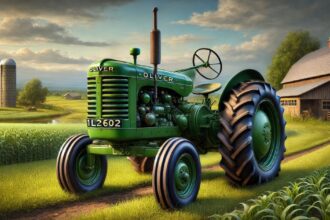Introduction to https://guia-automovil.com/2020/10/07/los-3-mejores-autos-clasicos-de-ford
Classic cars have a special allure that captivates enthusiasts and casual admirers alike. https://guia-automovil.com/2020/10/07/los-3-mejores-autos-clasicos-de-ford Among the legends of vintage automobiles, Ford stands out with its rich history and iconic models. For those who appreciate the beauty and craftsmanship of classic vehicles, exploring the top classic Fords is an exciting journey.
If you’ve ever wondered which Ford models truly define automotive excellence from yesteryears, you’re in for a treat. From roaring engines to sleek designs, these cars are more than just machines—they’re pieces of art with stories to tell. Let’s dive into this comprehensive guide that highlights not only the most revered classics but also what makes them so unforgettable in car culture. Whether you’re a seasoned collector or simply curious about classic cars, there’s something here for everyone who shares a passion for automotive heritage.
The History of Ford Motor Company
Ford Motor Company has a rich and storied history, dating back to its founding in 1903 by Henry Ford. The company’s inception marked a significant turning point in the automotive industry.
Henry Ford revolutionized mass production with the introduction of assembly line techniques. This innovation allowed cars to be manufactured more efficiently, making them affordable for the average American.
The Model T, launched in 1908, became an iconic symbol of early automobile culture. It transformed personal transportation and set the stage for modern vehicles.
Throughout its journey, Ford faced challenges like economic downturns and fierce competition. Yet it consistently adapted and evolved with changing market demands.
Today, Ford is recognized not only for its classic cars but also as a leader in technology and sustainability within the automotive sector. Its legacy continues to influence car enthusiasts around the globe.
Top 3 Classic Ford Cars
When it comes to classic cars, Ford has left an indelible mark on automotive history. The first standout is the iconic 1965 Mustang. Known for its sleek design and powerful performance, this car symbolizes freedom and rebellion.
Next up is the 1957 Ford Thunderbird, a true American classic. Its elegant curves and luxurious features made it a favorite among those who desired both style and comfort.
We have the legendary Ford Model A from the late 1920s. This vehicle revolutionized transportation with its affordability and reliability, making it accessible to many families across America.
Each of these models showcases Ford’s innovation and craftsmanship through various eras, captivating enthusiasts even today with their timeless appeal.
Features and Specifications of Each Car
The Ford Mustang, a symbol of American muscle, boasts a range of performance options. The early models featured a 289 cubic inch V8 engine that delivered impressive horsepower for its time. It was sleek and stylish, capturing the essence of freedom on the open road.
Next up is the Ford Thunderbird, known for its luxurious design. The classic ’55 model came with an array of features like power steering and windows, making it stand out among contemporaries. Its V8 engine provided both power and elegance in every drive.
We have the iconic Ford Model T. This groundbreaking vehicle revolutionized personal transportation with its affordability and simplicity. Equipped with a 2.9-liter four-cylinder engine, it allowed everyday people to experience mobility like never before.
Each car reflects unique engineering prowess while embodying different eras in automotive history.
The Popularity and Collectibility of Classic Ford Cars
Classic Ford cars have carved out a special niche in automotive culture. Their timeless designs and rich histories attract enthusiasts from all walks of life.
The allure often stems from the iconic status these vehicles hold. Models like the Mustang evoke nostalgia, representing an era of freedom and rebellion.
Collectibility is fueled by rarity and condition. Many collectors seek pristine examples or unique variants to showcase their passion. Auctions frequently see spirited bidding wars over classic Fords.
Social media has also played a role in this phenomenon. Online communities share restoration projects, photos, and stories that further ignite interest among potential buyers.
Events such as car shows celebrate these classics, providing platforms for owners to connect with fellow enthusiasts. This vibrant community fosters a sense of belonging that enhances the joy of ownership.
Investing in classic Fords can yield substantial returns too, making them appealing not just for enjoyment but also for financial gain.
Maintenance and Restoration Tips for Classic Ford Cars
Maintaining classic Ford cars requires dedication and care. Regular inspections are essential to catch potential issues early. Check the oil levels, coolant, and brake fluid frequently.
Rust is a common enemy for vintage vehicles. Inspect the bodywork and undercarriage regularly. Apply rust protection treatments when necessary to keep your car looking pristine.
When it comes to restoration, sourcing original parts can make all the difference. Utilize online forums or local clubs that specialize in classic Fords for advice on where to find authentic components.
Don’t forget about the electrical system! Old wiring can be a fire hazard. Consider upgrading with modern materials while keeping an eye out for originality.
Document every maintenance step you take. This not only helps track improvements but also adds value if you decide to sell in the future.
Comparison to Modern Ford Models
When comparing classic Ford cars to modern models, the differences are striking. Classic Fords were built with raw power and simplicity in mind. They offered a driving experience that emphasized mechanical connection over technological sophistication.
Modern Ford vehicles, on the other hand, prioritize efficiency and advanced technology. Features like adaptive cruise control and infotainment systems have transformed how we drive today.
The design language has also evolved significantly. While classic models boast timeless curves and chrome accents, contemporary designs lean toward sleek lines and aerodynamic shapes.
Performance metrics differ as well; while classics often focused on horsepower, new models integrate hybrid options for fuel economy without sacrificing power.
Despite these contrasts, many enthusiasts appreciate both eras for what they offer. The charm of a vintage ride stands in sharp contrast to the conveniences of today’s automobiles—each appealing to different facets of automotive passion.
Conclusion: https://guia-automovil.com/2020/10/07/los-3-mejores-autos-clasicos-de-ford
Classic Ford cars hold a unique place in automotive history. Their design and performance have captivated enthusiasts for generations. Each model tells a story, reflecting the spirit of its time.
The allure of these vehicles goes beyond nostalgia. They represent craftsmanship and innovation that continue to inspire modern designs. Collectors treasure them not just as cars but as pieces of art.
Owning a classic Ford is more than possession; it’s about embracing heritage. The journey of restoration can be both challenging and rewarding, adding layers to the experience.
Whether you’re an avid collector or simply appreciate vintage automobiles, classic Fords offer something special. They invite us to connect with the past while enjoying every drive on today’s roads.
FAQs
When diving into the world of classic Ford cars, questions often arise. Here are some frequently asked questions that can help enhance your understanding and appreciation for these iconic vehicles.
Q: What makes a Ford car classified as “classic”?
A: A classic Ford is typically defined by its age, historical significance, and desirability among collectors. Generally, models over 20 years old are considered classics.
Q: Why are classic Fords so popular?
A: Classic Fords hold a special place in automotive history. Their design, performance, and cultural impact resonate with enthusiasts who appreciate vintage craftsmanship.
Q: How do I determine the value of my classic Ford?
A: The value can vary based on condition, rarity, original parts versus modifications, and market demand. Consulting with experts or checking auction results can provide insights.
Q: Are there specific events for classic Ford enthusiasts?
A: Yes! Numerous car shows and meets celebrate vintage automobiles throughout the year. Events like the Woodward Dream Cruise attract thousands of fans showcasing their beloved classics.
Q: How should I maintain my classic Ford?
A: Regular maintenance is crucial to preserving its condition. Focus on routine checks for fluids, brakes, tires, and engine components while keeping it clean to prevent rust.
Q: Where can I find replacement parts for older models?
A: Many online retailers specialize in OEM (original equipment manufacturer) parts for older models. Additionally, local junkyards may have salvageable pieces from similar vehicles.
Q: Is restoring a classic Ford worth it financially?
A: While restoration costs can add up quickly, many owners find joy in breathing new life into an old vehicle. Plus, restored classics often appreciate over time if done correctly.
Exploring these aspects will deepen your connection to these remarkable machines and might spark interest in owning one yourself.

















